



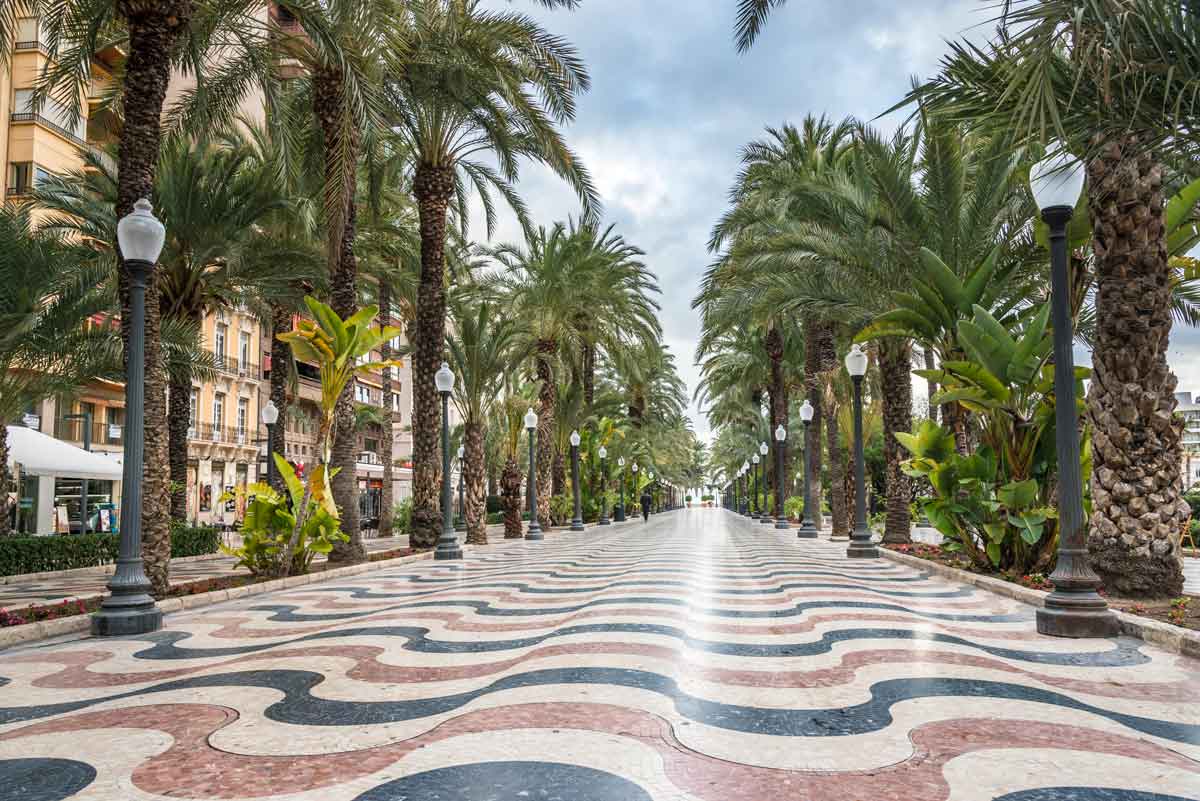
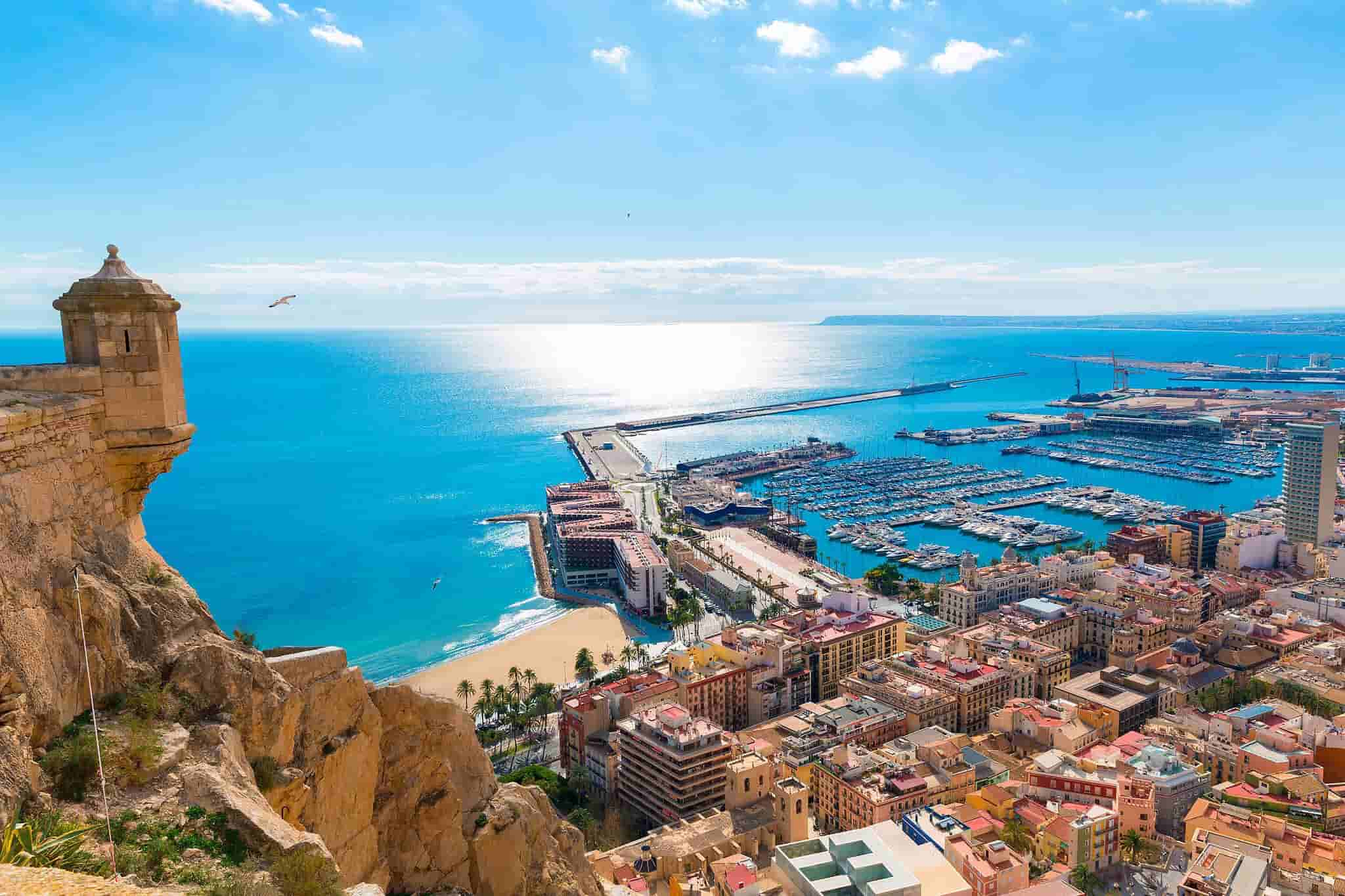
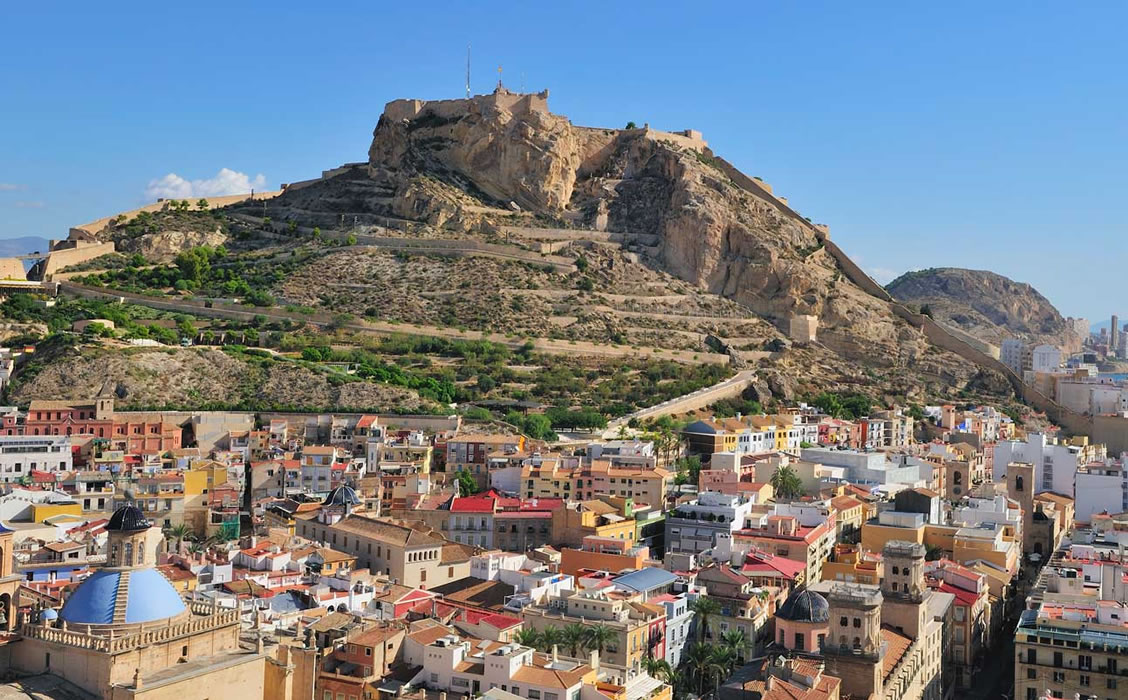
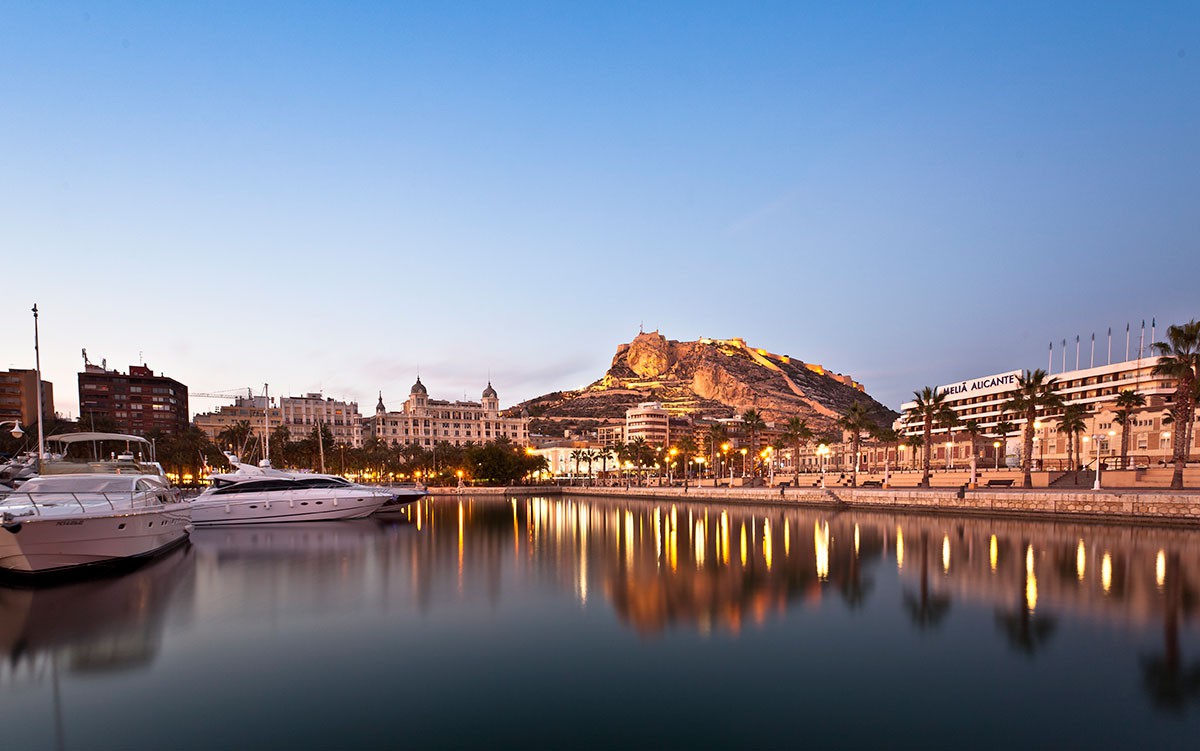
Alicante, with more than 320,000 inhabitants, is a traditional maritime city located on the Mediterranean Sea. The old part of the city integrates Postiguet Beach with two marinas and a large commercial port. Whilst strolling along the promenades you will discover other places of interest such as the almost 500 metres-long Explanada with its magnificent palms , its intricate marble inlays of red, cream and black tiles, representing the colours of Alicante; the Canalejas park where hundred-year-old ficus trees stand out between lush greenery; the gardens of Pedro Herrero, from where you can access the Sala Municipal de Exposiciones de la Lonja del Pescado (a large exhibition room in a building where traditionally the fish market used to be), located in a building decorated in 20th century Arabic style which is known as the largest building of the Valencian Community.
The Castillo de Santa Bárbara (Santa Barabara Castle) is by area and amenities one of the biggest castles on the Mediterranean. The castle sits on the summit of the Monte Benacantil, a rocky mass rising imposingly at 166 metres right next to the sea. Its privileged location attracted tribes from ancient times as is shown by the numerous Iberian and Roman traces discovered in this area stemming from the Bronze Age.
The slopes of Monte Benacantil surround the old part of Alicante like a shield. The old part of the city unveils traces from the late Romans, remains of walls from the Medieval times and streets from the Modern Age. El Barrio, as this part of the city is called, is where history meets art and which is well known for its vibrant nightlife. We can begin our tour at the Plaza de la Santísima Faz, situated behind the town hall, walking up the street San Agustín until we reach the Plaza de Quijano which is one of the most ancient squares in Alicante. By crossing the street Pedro Sebastiá, we then reach the street of San Roque, which is the name of the saint of Alicante and where you find the hermitage of the same name which was erected in 1559, rebuilt in 1875 and has recently been restored. Inside San Roque you can admire the Suffering Gipsy Christ – El Patético Cristo Gitano - a statue worshipped greatly by the people living in the quarter of Santa Cruz, the most historic quarter of Alicante.
In Alicante you can enjoy Mediterranean cuisine at its finest. Fish and fresh seafood from the bay of Alicante, fruit and vegetables from a kitchen garden, a huge choice of rice dishes together with the vinos alicantinos, wines of exceptional quality, which all together make up a complete menu à la carte.
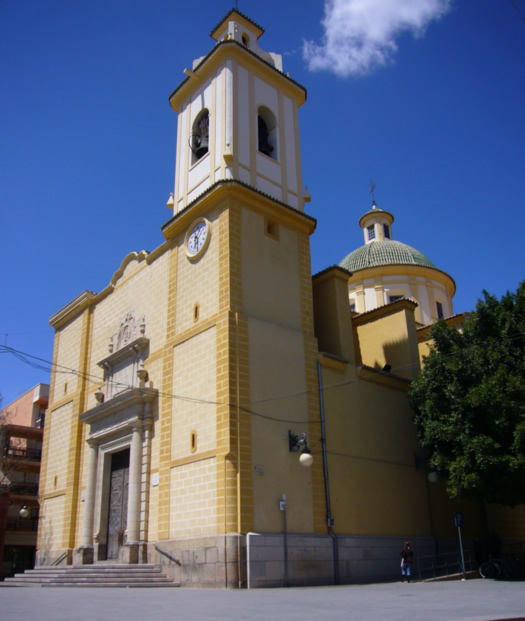 San Vicent del Raspeig is a town located northwest of the province of Alicante.
San Vicent del Raspeig is a town located northwest of the province of Alicante.
Its urban center is 6 kilometers away from the city of Alicante, although the extension of Alicante and San Vicent form an urbanised continuum.
It has become a University City of 56.000 inhabitants, which houses the main campus of the University of Alicante with about 30.000 students and offers numerous services such as shops and restaurants to neighbours and visitors.
San Vicent has managed to keep its roots and popular traditions, while becoming a modern, cosmopolitan city designed for people. It has unique buildings such as the church of San Vicente Ferrer, the Town Hall or Municipal Market, as well as architectural landmarks such as the Municipal Library, the Faculty of Education or the six-storey Vertical Garden.
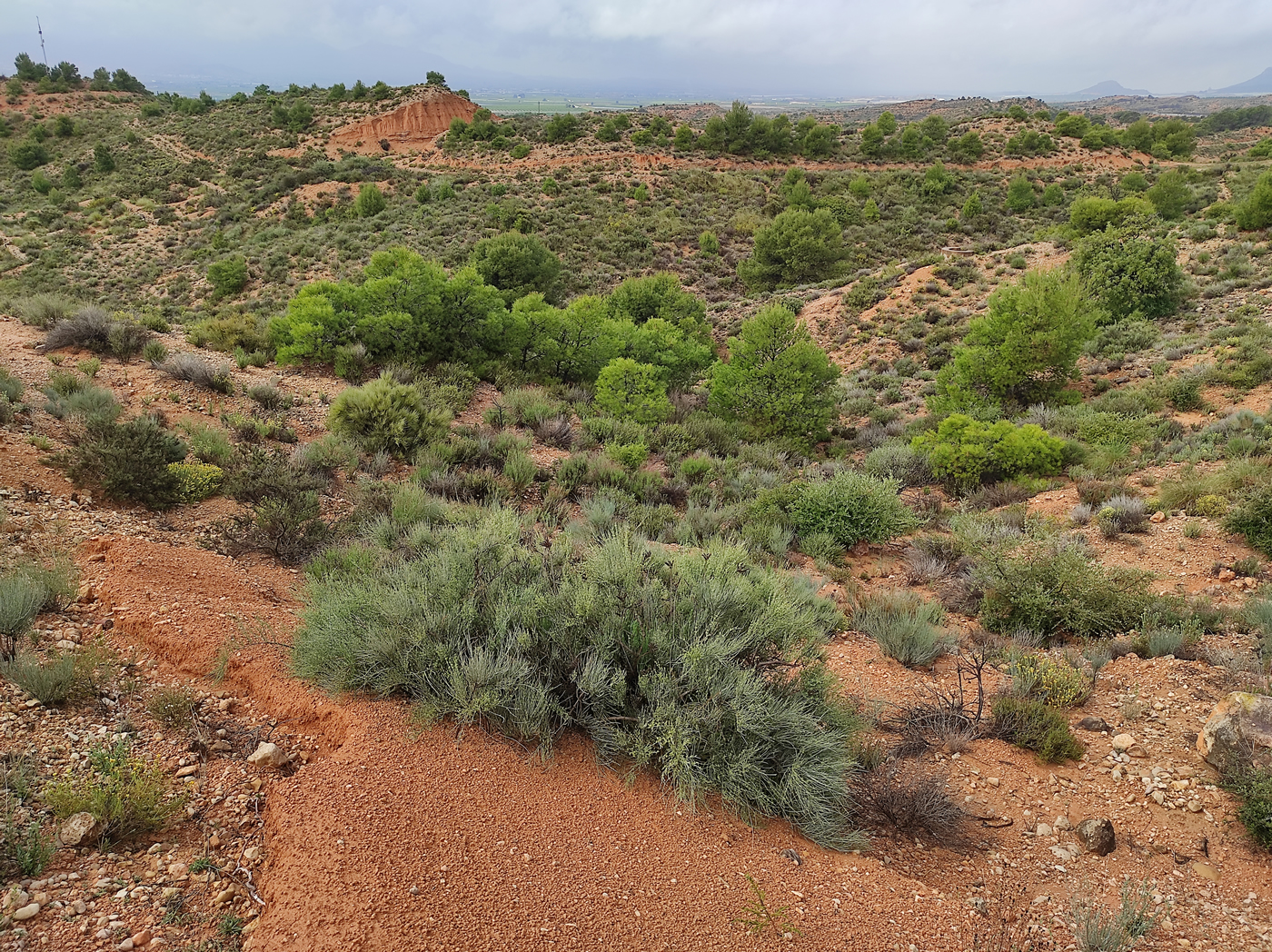
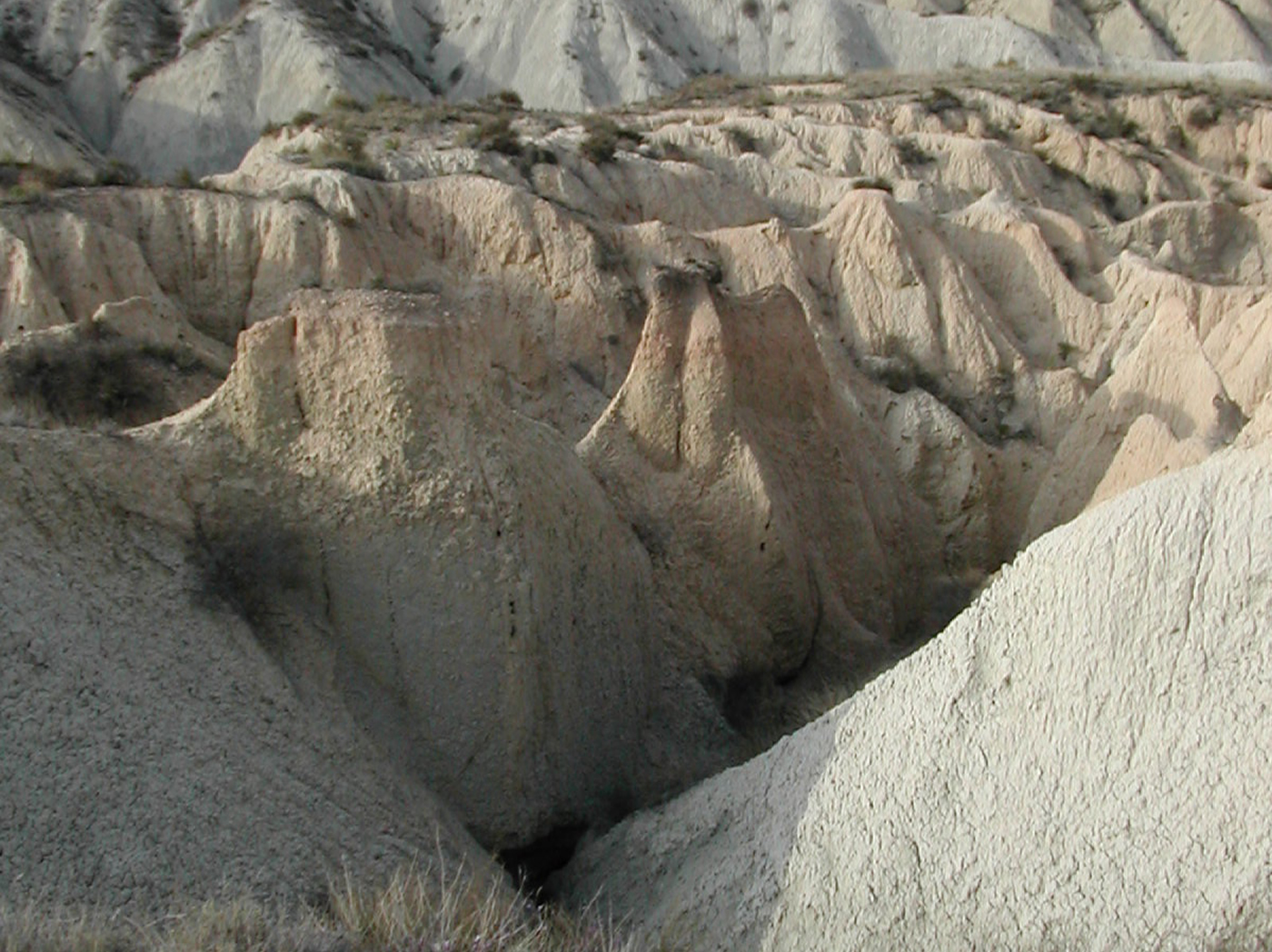
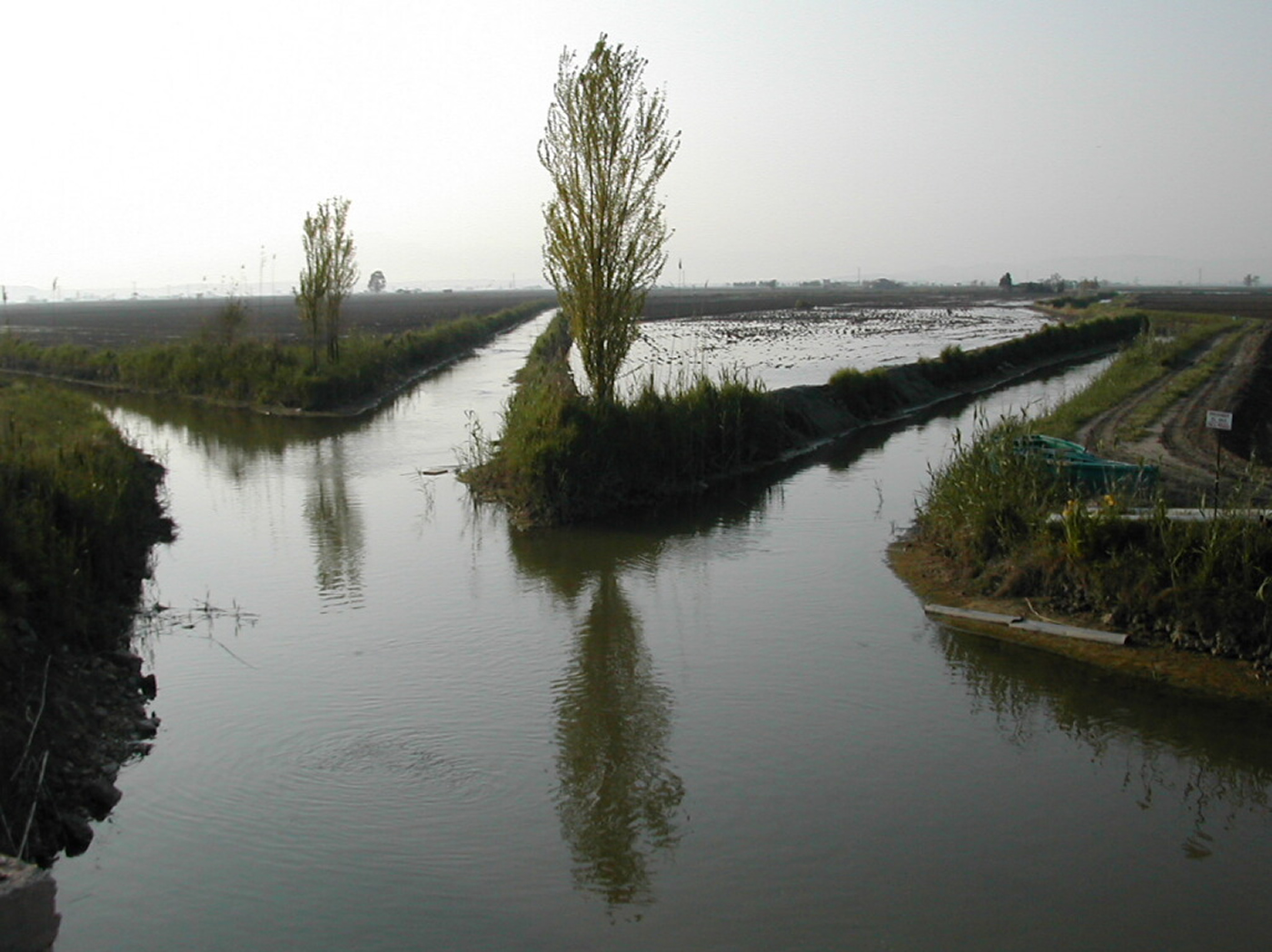









ALO CONGRESS- VIAJABIEN S.L.
Numancia, 73, 7º C2
08029 - Barcelona (Spain)
Phone: (+34) 933 633 954
secretary@sere2022.org
Payment and invoices
admin@sere2022.org